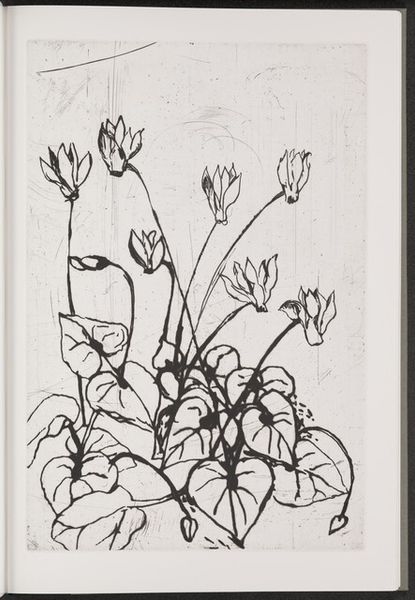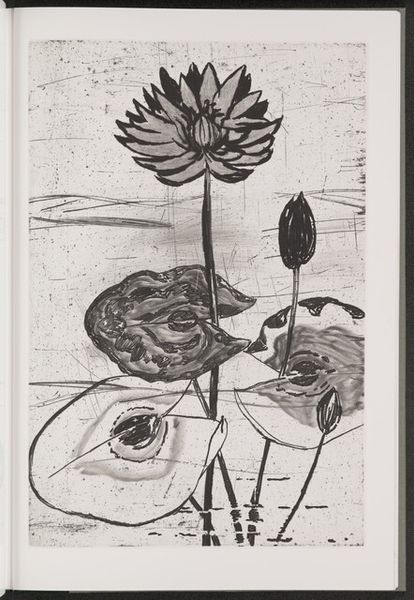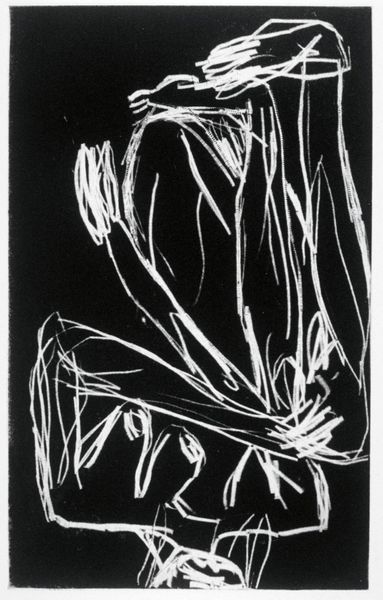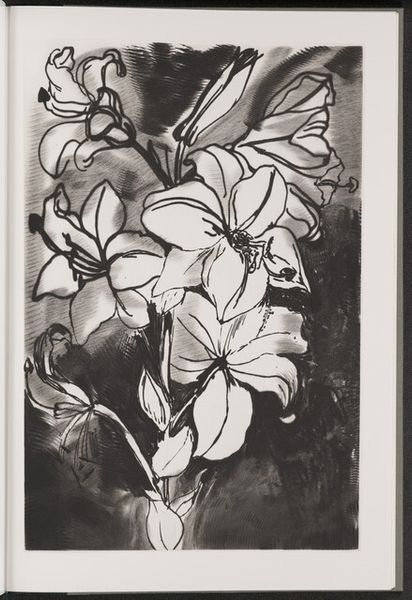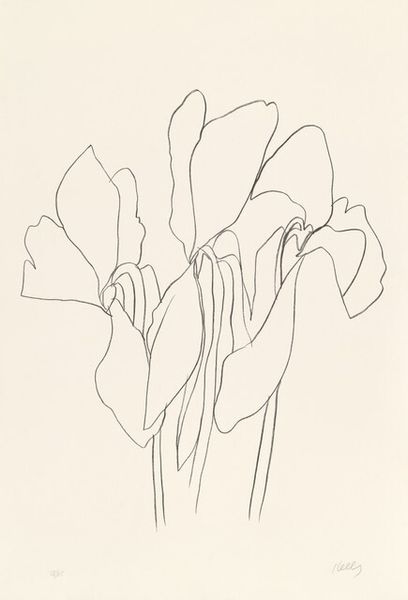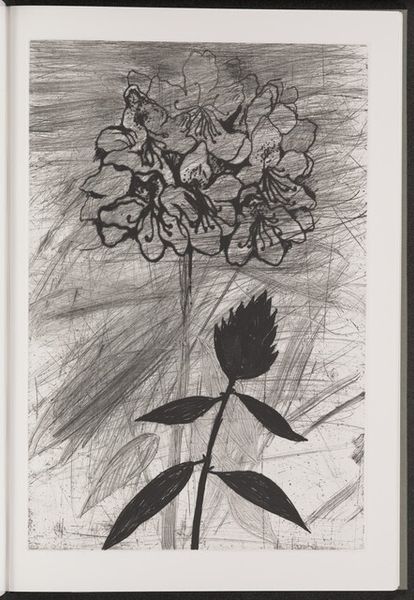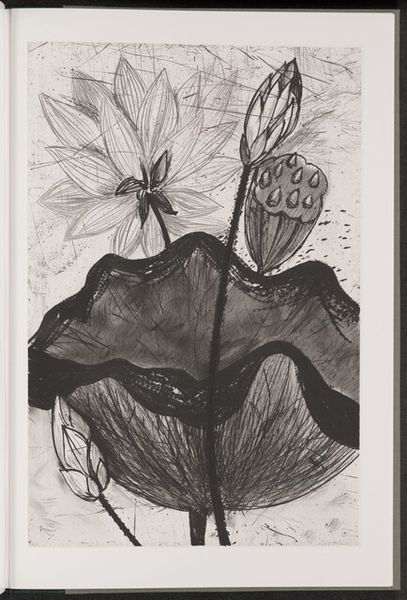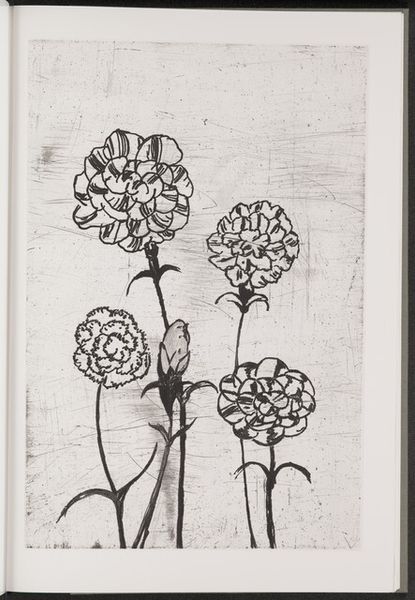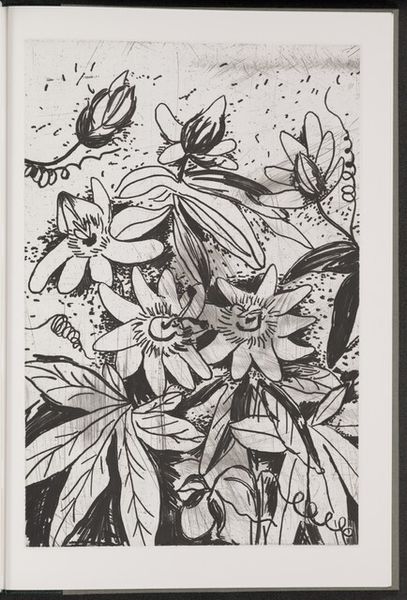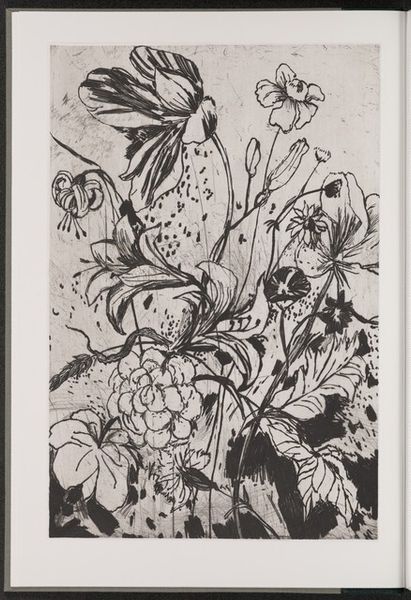
drawing, print, etching
#
drawing
# print
#
etching
#
figuration
#
modernism
Dimensions: plate: 45.6 x 30.5 cm (17 15/16 x 12 in.) page size: 52 x 35.5 cm (20 1/2 x 14 in.)
Copyright: National Gallery of Art: CC0 1.0
Curator: This is "Tulip," a 1984 etching and aquatint by Jim Dine. He's an artist closely associated with Pop Art, although his work defies easy categorization. Editor: The striking monochrome contrast immediately pulls me in. There's a raw, almost primal energy radiating from these stylized tulips. They’re stark yet graceful, with this dynamic composition against the subdued backdrop, isn't it? Curator: Absolutely. I find Dine's use of such a traditional medium, etching, fascinating. How he merges this with a seemingly simple subject, like the tulip, challenges art-historical norms. Flowers are so loaded aren't they – symbols of femininity, fragility, life, and death. In the late 20th century, their resurgence offers an entry point to a feminist critique, subverting stereotypes surrounding the domestic space and notions of female virtue. Editor: Yes, the symbolism runs deep. Throughout art history, tulips, in particular, have represented themes like transience, beauty, but also, extravagance – think of tulip mania! In Dine's etching, there is a deliberate starkness, moving us away from notions of delicacy and towards a rawer exploration of natural form. Curator: What I find intriguing is how the seemingly representational becomes almost abstract. These tulips are instantly recognizable, yet Dine deconstructs them through this crude rendering and contrasting tones. It pushes beyond simple representation toward the investigation of mark-making itself and evokes something more unsettling or disruptive. It asks us questions. Editor: That's the genius of it. Dine strips away excess detail, capturing the very essence of the tulip, while also imbuing it with deeper psychological weight. They seem to echo memories and longings, don't they? Curator: The tulips also resonate with the politics and artistic practices during the second wave of the feminist movement when reclaiming nature and natural imagery become so potent. Editor: Exactly, Dine is in dialogue with larger visual culture, layering contemporary meaning onto enduring symbols. Curator: Jim Dine presents us with far more than a simple depiction of tulips here. Editor: A thought-provoking piece offering new insights each time you see it.
Comments
No comments
Be the first to comment and join the conversation on the ultimate creative platform.
